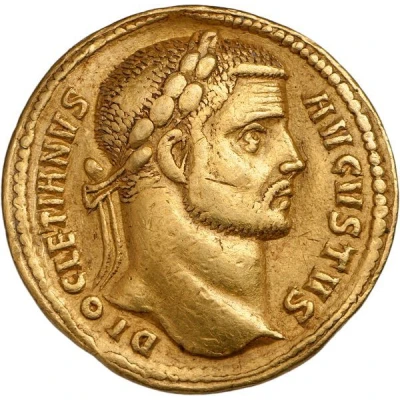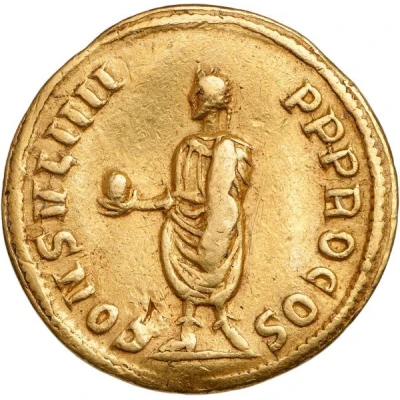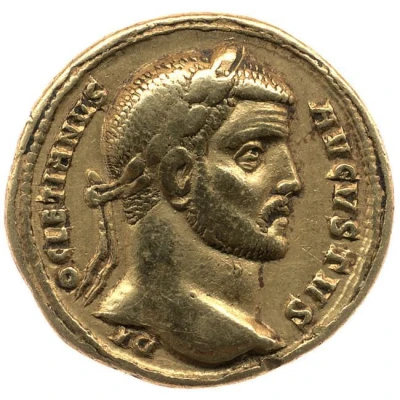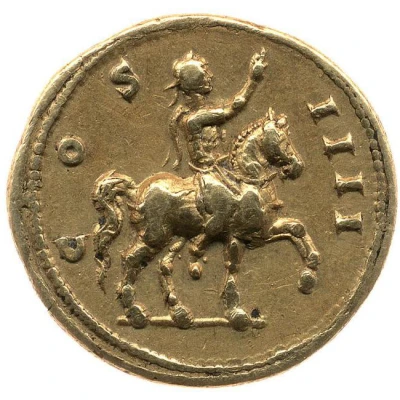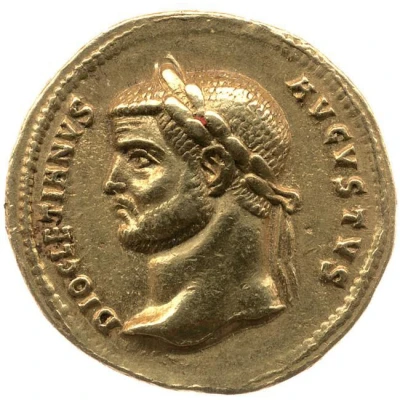
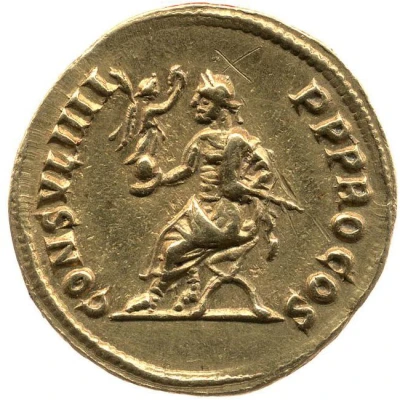

© Trustees of the British Museum
Aureus - Diocletianus CONSVL IIII P P PROCOS
| Gold | 5.3 g | - |
| Issuer | Rome › Roman Empire (27 BC - 395 AD) |
|---|---|
| Emperor | Diocletian (Gaius Aurelius Valerius Diocletianus) (284-305) Maximian Herculius (Marcus Aurelius Valerius Maximianus) (286-305) |
| Type | Standard circulation coin |
| Years | 290-292 |
| Value | Aureus (25⁄2) |
| Currency | Antoninianus, Reform of Caracalla (AD 215 – 301) |
| Composition | Gold |
| Weight | 5.3 g |
| Shape | Round (irregular) |
| Technique | Hammered |
| Demonetized | Yes |
| Updated | 2024-10-05 |
| Numista | N#306153 |
|---|---|
| Rarity index | 100% |
Reverse
Diocletian, draped, cuirassed, holding Victory on globe in right hand and parazonium in left hand.
Script: Latin
Lettering: CONSVL IIII P P PROCOS
Translation:
Consul Quartum, Pater Patriae, Proconsul.
Consul for the fourth time, father of the nation, proconsul.
Comment
Example of this type:Trustees of the British Museum
Source:
Online Coins of the Roman Empire (OCRE)
Interesting fact
One interesting fact about the Aureus - Diocletianus (CONSVL IIII P P PROCOS) coin is that it was issued during a time of significant economic and political change in the Roman Empire. The coin was minted during the reign of Diocletian, who was attempting to reform the Roman economy and stabilize the empire's currency. The Aureus was a new denomination introduced by Diocletian, and it was intended to be a more stable and reliable form of currency than the previous denomination, the denarius. Despite these efforts, the Roman Empire continued to face economic challenges, and the value of the Aureus fluctuated significantly during this time.
